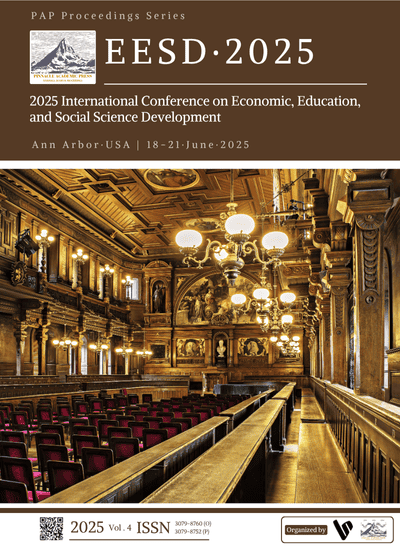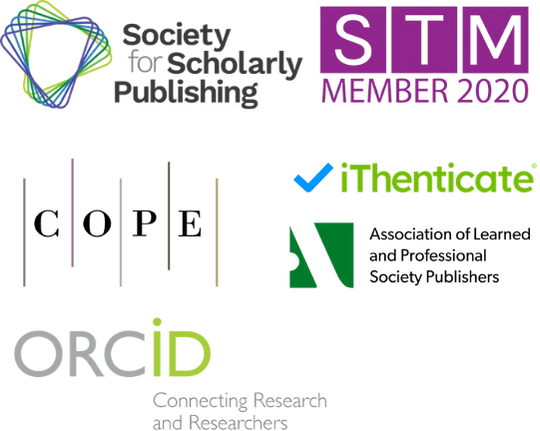The Evolution of Modernist Architecture through Recycled Multi-Material and Digital Algorithms
DOI:
https://doi.org/10.71222/5pkvjy95Keywords:
modernist architecture, vacant space, recycled plastic, multi-material, digital algorithms, gradation parametersAbstract
Modernist architecture emerged as a response to basic social needs through the social housing movement and represented a significant experiment in urban living, particularly in cities like London. A detailed analysis of modernist architecture from space, social, material, and economic aspects reveal numerous issues, including poor space quality, limited privacy, and inefficient as well as costly use of materials. Therefore, recycled multi-material and digital algorithms were applied to reclaim vacant spaces and enhance space quality in these architectural environments. Using digital algorithms, multi-materials composed of recycled plastics can be 3D printed with variable gradients in thickness, density, transparency, and flexibility. These material gradations are generated by digital analysis of structure, porosity, privacy, and daylight based on space openness, privacy, structural strength, and daylight access requirements, which were introduced to enhance space quality and resolve specific space issues. In the end, Stangate House, Alexandra and Ainsworth Estate were selected as test sites, where multi-material and digital algorithms were implemented in vacant spaces to support the evolution and revitalization of heritage-worthy modernist architecture.
References
1. R. Görner, “Modernism, 1910–1945. Image to Apocalypse,” Comp. Crit. Stud., vol. 3, no. 3, pp. 419–422, 2006, doi: 10.1353/ccs.2007.0009.
2. J. Fergusson, History of the Modern Styles of Architecture. Norderstedt, Germany: BOD–Books on Demand, 2022.
3. N. H. Buras et al., “A critical history of architectural modernism,” J. Archit. Urban., vol. 49, no. 1, pp. 23–36, 2025, doi: 10.3846/jau.2025.21776.
4. J. Wallace, Abstraction in Modernism and Modernity: Human and Inhuman. Edinburgh: Edinburgh Univ. Press, 2023.
5. R. Castellanos-Gómez, “A notion of freedom in Le Corbusier’s architecture,” Cuad. Proy. Arquit., no. 13, pp. 91–93, 2023, doi: 10.20868/cpa.2023.13.5179.
6. J. M. Proença, R. Ferreira, and A. S. Gago, “Seismic retrofit of pilotis buildings by novel aluminium buckling-restrained braces (Al-BRBs). Application to a modernist architecture building in Lisbon,” Int. J. Archit. Herit., vol. 18, no. 4, pp. 669–690, 2024, doi: 10.1080/15583058.2023.2204821.
7. I. E. Idoko, O. E. Uzowulu, and I. M. Onuorah, “Minimalist architecture and the concept of less is more: The place of Hellenistic Cynicism in the architectural concept of Mies Van Der Rohe,” Int. J. Res. Innov. Soc. Sci., vol. 8, no. 2, pp. 211–224, 2024.
8. P. Glassman, “The other modern movement: Architecture,” Humanities Commons, 2022.
9. M. Feizbahr and P. Pourzanjani, “The evolution of architectural styles: From modernism to postmodernism,” J. Rev. Sci. Eng., 2023.
10. X. Luo, “Immersive digital modeling and interactive manufacturing systems in the textile industry,” J. Comput. Signal Syst. Res., vol. 2, no. 5, pp. 31–40, 2025, doi: 10.71222/jyctft16.
11. X. Luo, “Reshaping coordination efficiency in the textile supply chain through intelligent scheduling technologies,” Econ. Manag. Innov., vol. 2, no. 4, pp. 1–9, 2025, doi: 10.71222/ww35bp29.
12. G. Franklin and E. Harwood, Post-modern Buildings in Britain. London: Batsford Books, 2023.
13. C. T. de M. Soares et al., “Recycling of multi-material multilayer plastic packaging: Current trends and future scenarios,” Resour. Conserv. Recycl., vol. 176, 105905, 2022, doi: 10.1016/j.resconrec.2021.105905.
14. M. G. Kibria et al., “Plastic waste: Challenges and opportunities to mitigate pollution and effective management,” Int. J. Environ. Res., vol. 17, no. 1, p. 20, 2023, doi: 10.1007/s41742-023-00507-z.
15. K. Yadav et al., “Transforming waste into innovation: A review of plastic bricks as sustainable construction materials,” Discov. Civ. Eng., vol. 1, no. 1, p. 38, 2024, doi: 10.1007/s44290-024-00040-8.
16. P. Lamba et al., “Recycling/reuse of plastic waste as construction material for sustainable development: A review,” Environ. Sci. Pollut. Res., vol. 29, no. 57, pp. 86156–86179, 2022, doi: 10.1007/s11356-021-16980-y.
17. H. Pahlavani et al., “Deep learning for the rare-event rational design of 3D printed multi-material mechanical metamaterials,” Commun. Mater., vol. 3, no. 1, p. 46, 2022, doi: 10.1038/s43246-022-00270-2.
18. K. Grigoriadis, “Computational and conceptual blends: Material considerations and agency in a multi-material design work-flow,” Front. Archit. Res., vol. 11, no. 4, pp. 618–629, 2022, doi: 10.1016/j.foar.2022.04.005.
19. Z. Wang et al., “Multi-material additive manufacturing via fused deposition modeling 3D printing: A systematic review on the material feeding mechanism,” Proc. Inst. Mech. Eng. Part E: J. Process Mech. Eng., 2024, doi: 10.1177/09544089231223316.
20. P. Amore, “Circle packing in regular polygons,” Phys. Fluids, vol. 35, no. 2, 2023, doi: 10.1063/5.0140644.
21. K. Han, Y. T. Feng, and D. R. J. Owen, “Sphere packing with a geometric based compression algorithm,” Powder Technol., vol. 155, no. 1, pp. 33–41, 2005, doi: 10.1016/j.powtec.2005.04.055.
22. A. Nowak, “Application of Voronoi diagrams in contemporary architecture and town planning,” Chall. Mod. Technol., vol. 6, no. 2, pp. 30–34, 2015.
Downloads
Published
Issue
Section
License
Copyright (c) 2025 Jiangjing Mao (Author)

This work is licensed under a Creative Commons Attribution 4.0 International License.



